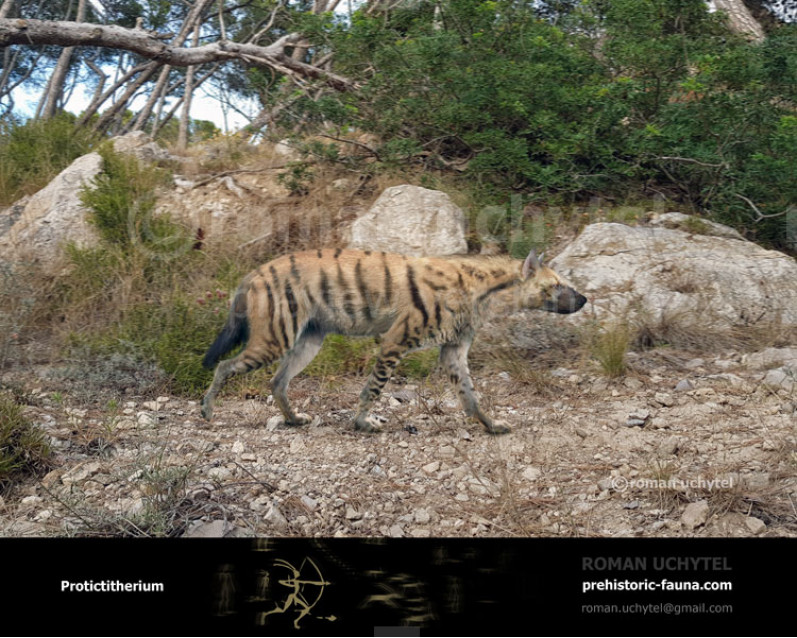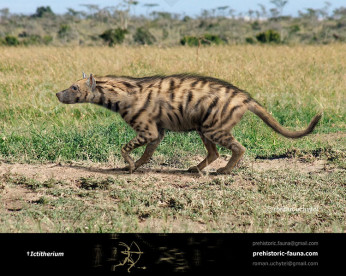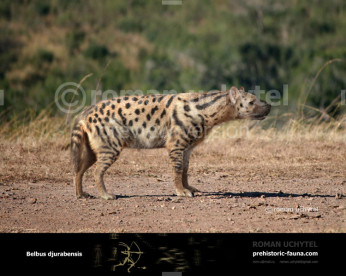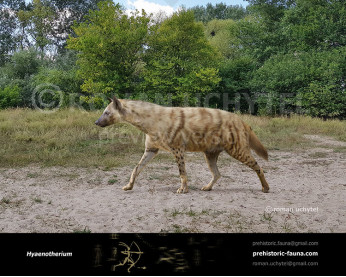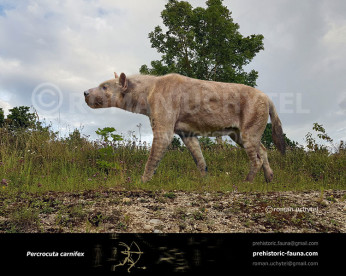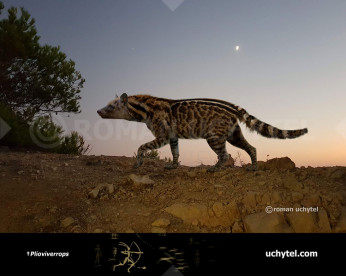Protictitherium
407407
Like all other families of modern large carnivores, the hyaenids have rather humble origins, and the earliest members of the family, included in the genus Protictitherium, were rather unimpressive creatures, resembling in size and proportions a mixture between a terrestrial civet and a small jackal. Their all-purpose dentition allowed these animals to deal with a variety of food items, from small vertebrate and invertebrate prey to carrion to ocassional vegetable matter.
Protictitherium fossils are a very common occurrence at the Batallones fossil sites, which is not surprising given their scavenging abilities. The stench of the bodies of animals caught in the natural traps would attract these small carnivores from miles around, and their agility allowed them to enter the cavities without problems, but getting out was of course a much more steep prospect.
Larger, more specialized hyaenid species are known from other fossil sites of late Miocene age, but for some reason they are absent from Batallones, or at least we have not found them yet. For one thing, the larger carnivore guild was already so crowded with different species at Batallones that the presence of a big hyaenid would have exacerbated the competition for resources. The agile, unobtrusive Protictitherium, on the other hand, could literally swirl among the feet of the larger predators and snatch its lunch from the leftovers of their kills. But once they entered the natural traps, all carnivores shared the same tragic doom, a destiny as dramatic as its consequences have been rewarding for modern paleontologists!
https://chasingsabretooths.wordpress.com/2014/11/11/denizens-of-madrids-miocene-woods-the-early-hyaenids/
Like all other families of modern large carnivores, the hyaenids have rather humble origins, and the earliest members of the family, included in the genus Protictitherium, were rather unimpressive creatures, resembling in size and proportions a mixture between a terrestrial civet and a small jackal. Their all-purpose dentition allowed these animals to deal with a variety of food items, from small vertebrate and invertebrate prey to carrion to ocassional vegetable matter.
Protictitherium fossils are a very common occurrence at the Batallones fossil sites, which is not surprising given their scavenging abilities. The stench of the bodies of animals caught in the natural traps would attract these small carnivores from miles around, and their agility allowed them to enter the cavities without problems, but getting out was of course a much more steep prospect.
Larger, more specialized hyaenid species are known from other fossil sites of late Miocene age, but for some reason they are absent from Batallones, or at least we have not found them yet. For one thing, the larger carnivore guild was already so crowded with different species at Batallones that the presence of a big hyaenid would have exacerbated the competition for resources. The agile, unobtrusive Protictitherium, on the other hand, could literally swirl among the feet of the larger predators and snatch its lunch from the leftovers of their kills. But once they entered the natural traps, all carnivores shared the same tragic doom, a destiny as dramatic as its consequences have been rewarding for modern paleontologists!
https://chasingsabretooths.wordpress.com/2014/11/11/denizens-of-madrids-miocene-woods-the-early-hyaenids/

